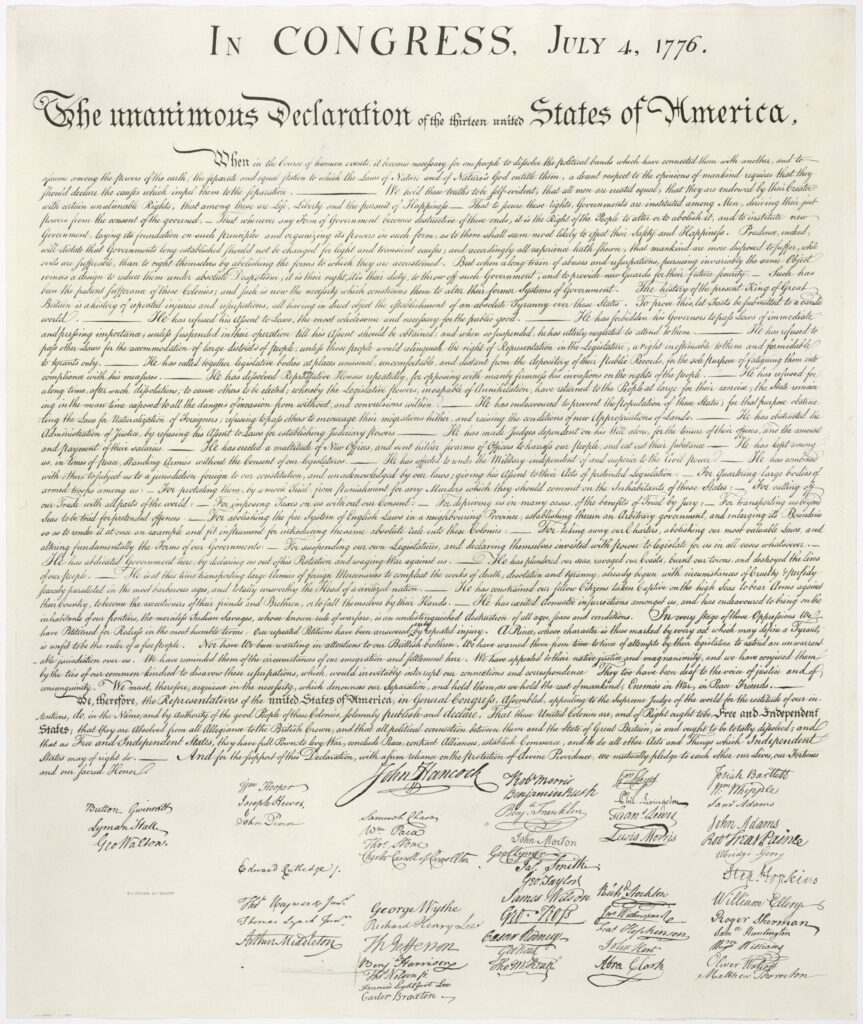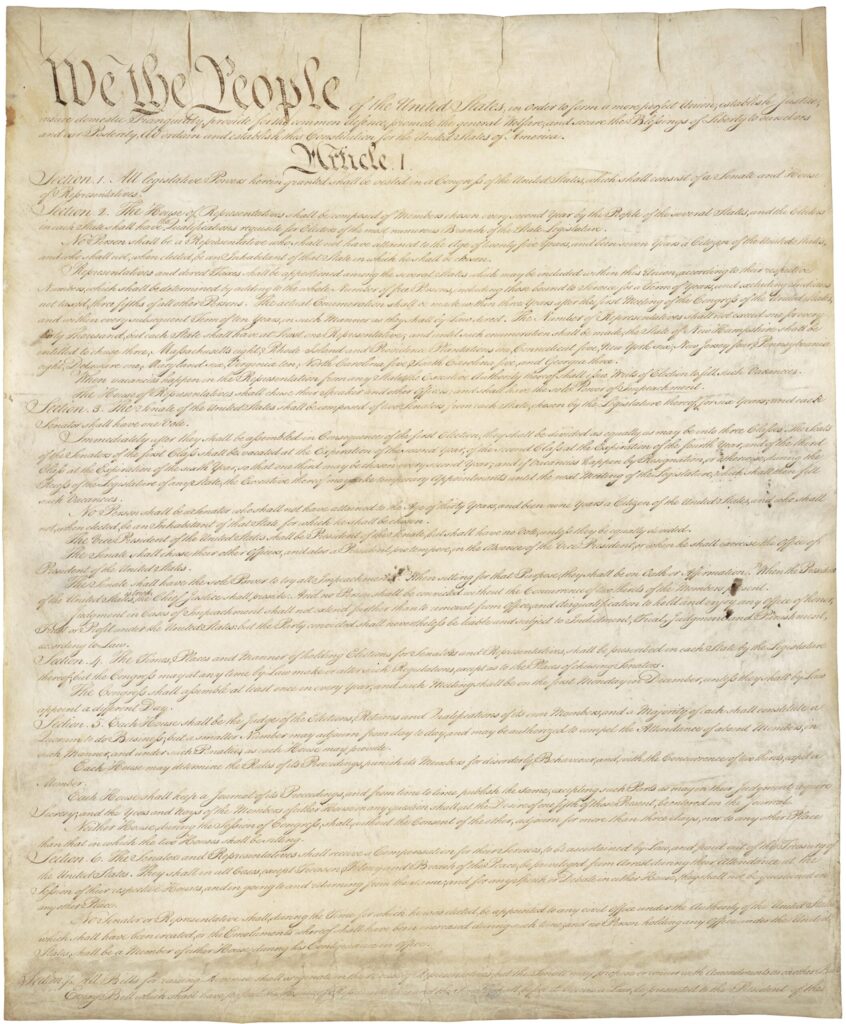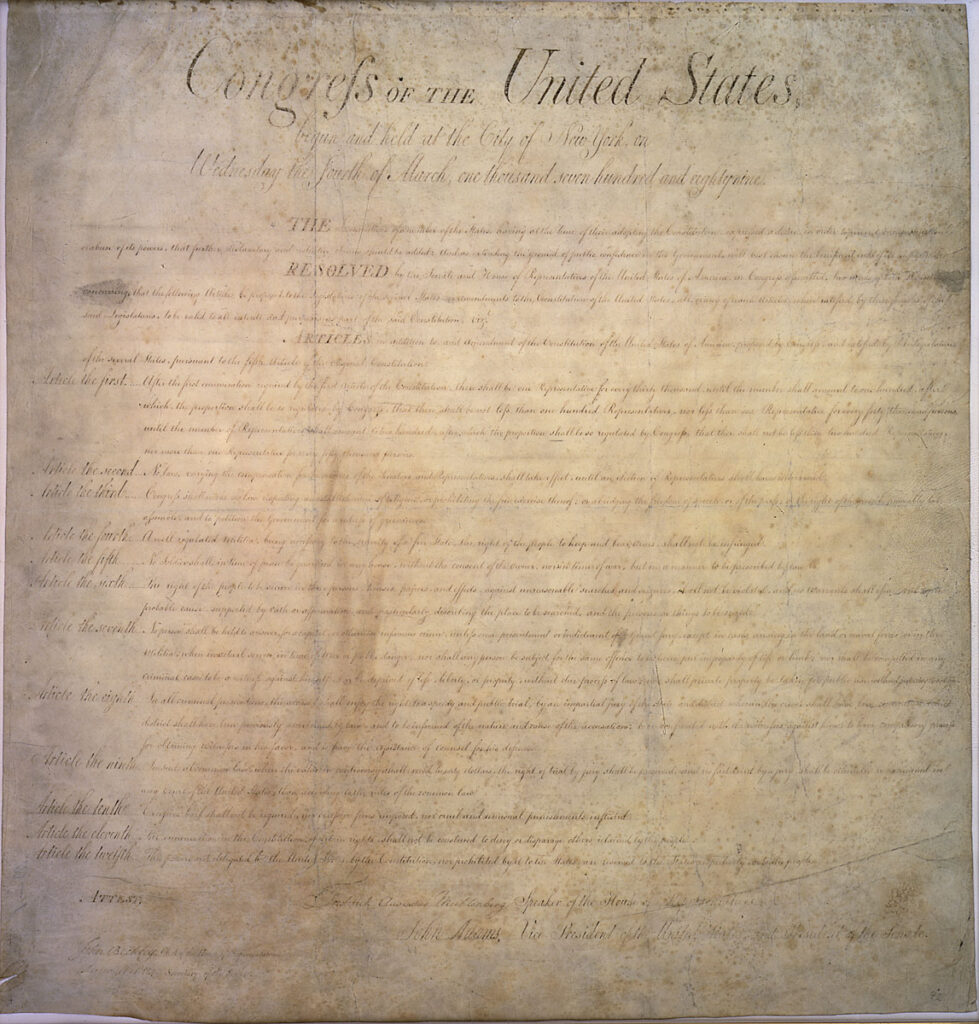Foundations of American Democracy
- Home
- Foundations of American Democracy
After the Revolution
After successfully defeating the British Army and gaining their independence at the 1783 Treaty of Paris, the 13 former colonies (…) each voted to adopt a republican form of government with a written constitution. The colonies’ representatives had seen the failure of the British government, and decided on a written constitution to prevent history repeating itself. Before the Constitution of the United States, each former colony wrote its own constitution, which exist today.
The states were not as democratic as they are today. Only land-owning white males were allowed to vote. Some states also required religious test for voting, as well as office holding. Thomas Jefferson’s Virginia Statue of Religious Freedom, adopted in 1786, was the first state law to ensure freedom of religion. It allowed citizens to choose their own religion and not have their rights affected by their religion choice.
Many state constitutions include bills of rights to make sure that individual liberties were protected. State constitutions were carefully crafted. After the tyrannical British rule, limitations of powers were placed on the state government. The greatest amount of power was given to the lower houses of the state assemblies, or legislatures, whose members were elected directly by voters.
Articles of the Confederation
On November 15, 1777, the Second Continental Congress submitted a plan to the states for forming a union. Known as the Articles of Confederation, it called for a “league of friendship” among the states. It was ratified by all the states in 1781 and set up a Congress in which each state had one vote. Its responsibilities were to settle disputes between states, conduct foreign relations, and rule in certain matters of common concern, such as relations with Native Americans.
However, the Articles of Confederation were nearly useless in holding the country together, and its weakness contributed to many problems.
Unable to levy taxes, it asked the states to provide funds but could not force them to pay. The Congress lacked the power to print money, and the states had many different currencies Lacking the power to regulate commerce, the Congress could not prevent the trade wars that strained relations among the states. Finally, the Confederation government was not organized to provide leadership or enforce its decisions.
The nation was in debt from the war and had lost its main trading partner, Britain. Americans had to continue buying manufactured goods from Britain. American merchants were deeply in debt to Britain. Spain also closed the Mississippi River to American trade in an attempt to limit American settlement along the river. British forces remained in forts on American soil in response to state governments passing laws that delayed the payments to British subjects. Since the central government was weak, it was unable to force the state governments from repealing these laws.
The Constitution of the United States
After Shay’s Rebellion in 1786-1787, the Founders decided to create a new government structure to solve the problems that the Articles couldn’t. In May 1787, fifty-five delegates assembled in Philadelphia to discuss the issue. These men came from all walks of life and had served in the Congress, state legislatures, or as governors. After much discussion, they decided to start from scratch. James Madison, the “Father of the Constitution,” worked with other delegates to write the Constitution, finishing in September 1787.
This document presented the people with a federal system of government – power shared between the central and state governments. The powers of the federal government are carefully spelled out in the Constitution and the states were to retain control of their internal affairs. The Framers had to create a balance between the weak Articles and the tyrannical British government. To ensure that the central government would not assume enormous power, the powers not given to the states was further split into three branches of the government each with checks and balances over the other two. These branches are the legislative, executive, and judicial branches.
To go in effect, the Constitution needed to be ratified by nine of the thirteen states. Not everyone supported the changes. The opposition came from the notion that too much power was given to the federal government and not the states. It also did not originally contain a Bill of Rights. John Jay, James Madison, and Alexander Hamilton wrote a collection of essays supporting the Constitution’s ratification known as The Federalist Papers explaining their support. The Constitution was ratified by all thirteen states by 1790.
The newly elected Congress met in 1789, and one of its first acts was crafting the first ten amendments to the Constitution – the Bill of Rights, guaranteeing individual liberties like freedom of speech, press, trial by jury, and protection from cruel and unusual punishment. The tenth amendment states that all powers not given to the federal government shall be retained by the states.
With this adoption, America changed the course of history. They became an example to other countries that fought for their independence and a government that reflects the will of the governed. Our Founders set up a government that ensured individual liberties and protection from a tyrannical government.




